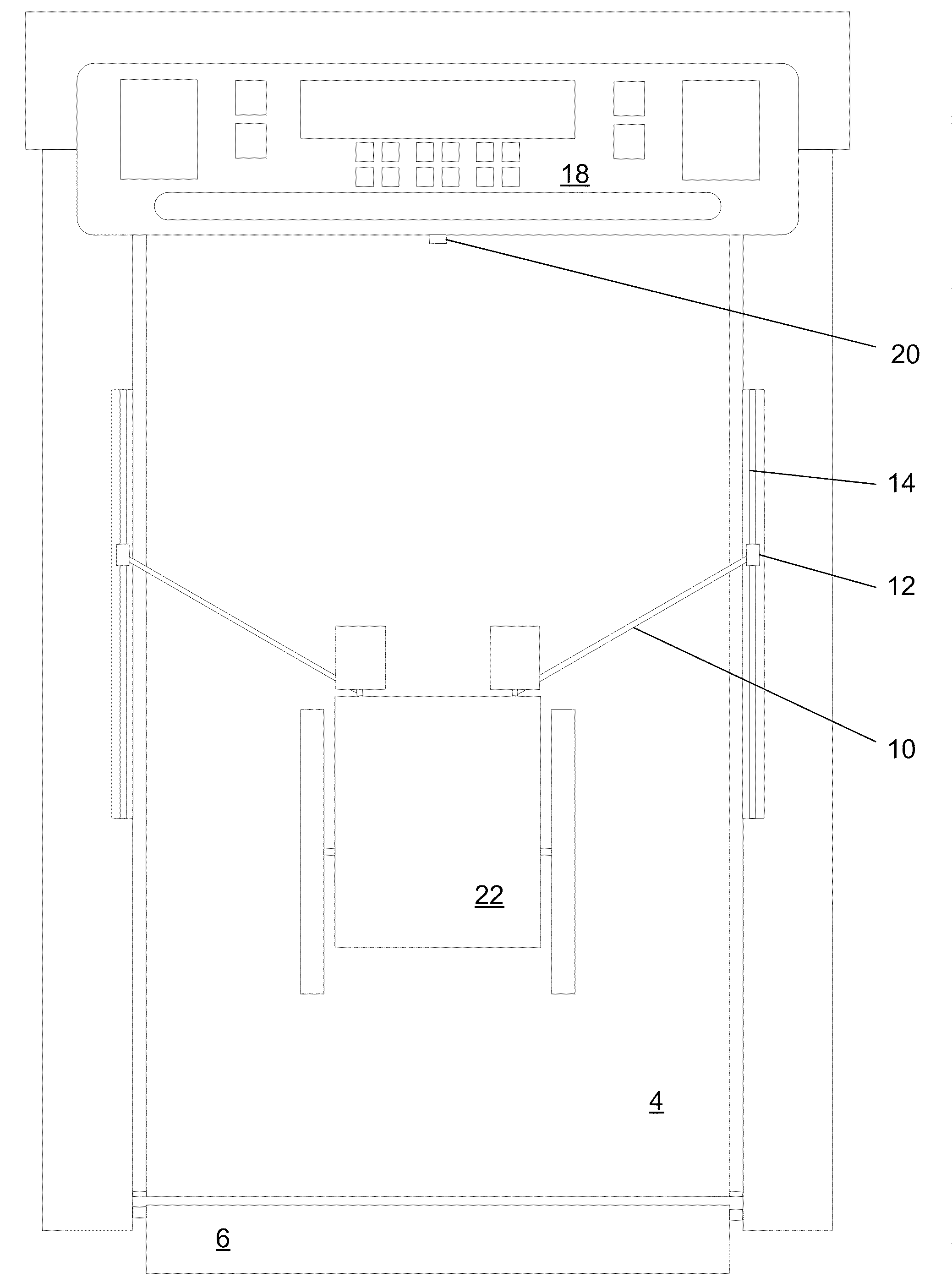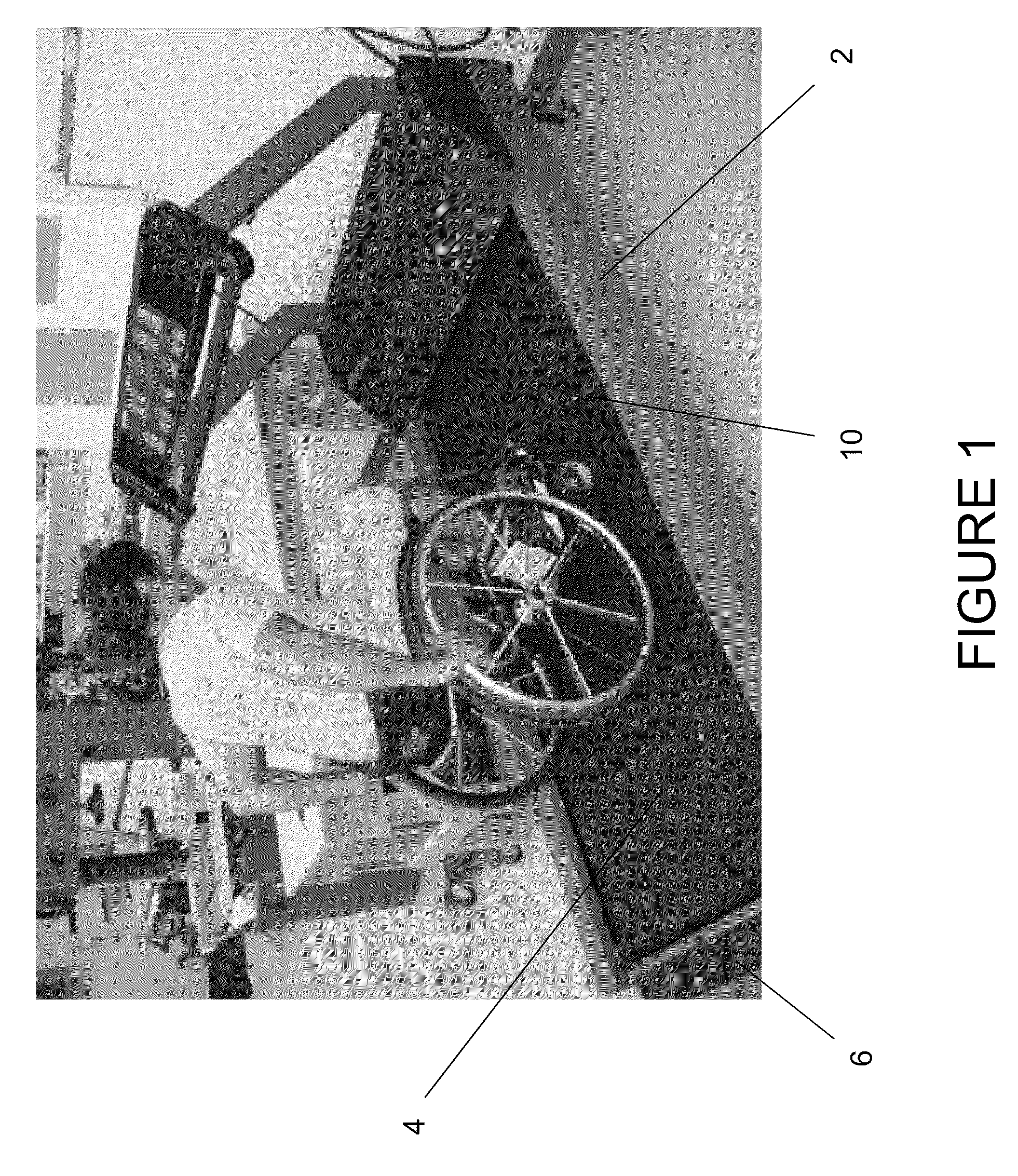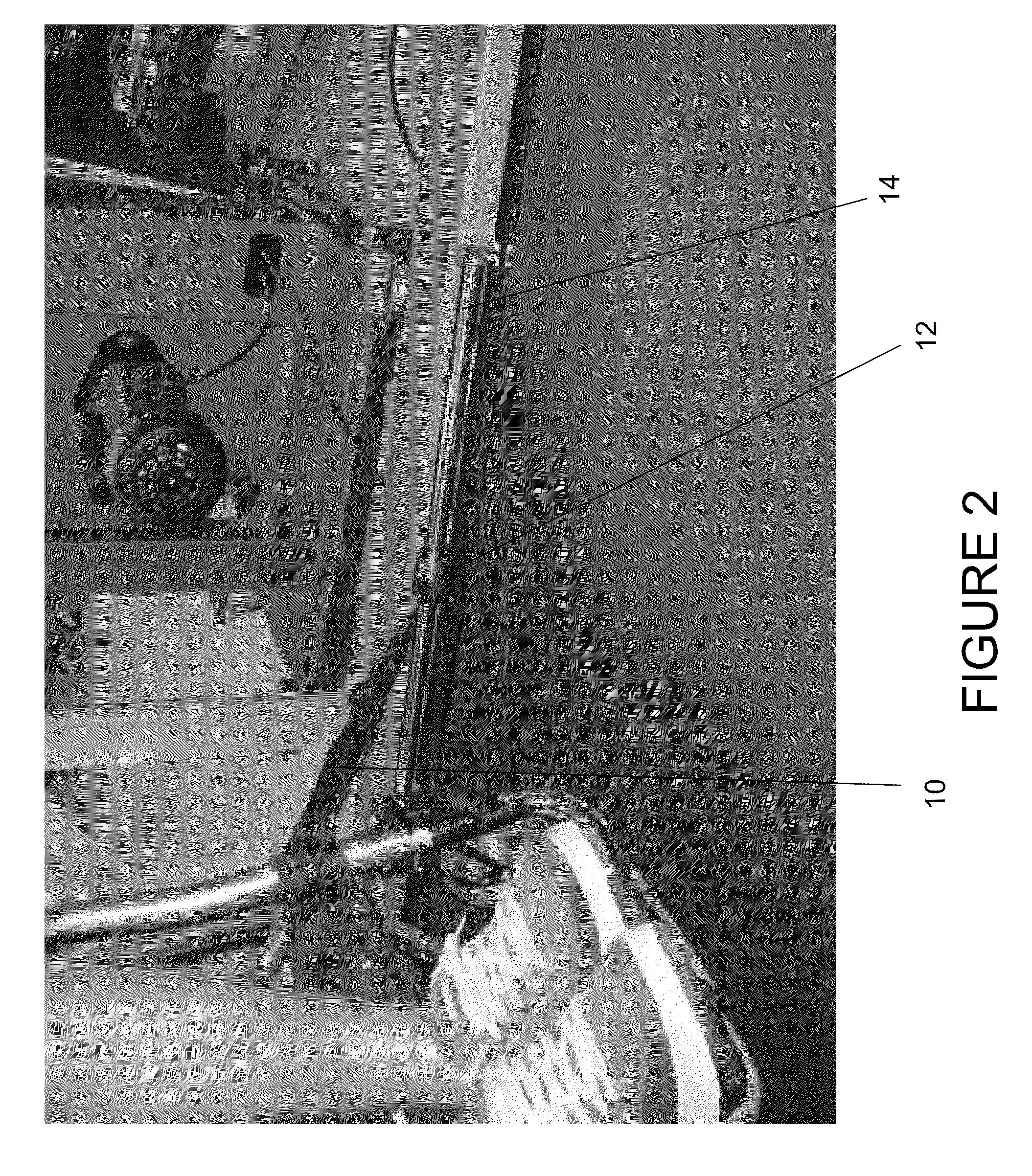Wheelchair accessible treadmill
a wheelchair-accessible, treadmill technology, applied in the field of treadmills, can solve the problems of limited availability of wheelchair-accessible cardiovascular exercise equipment for this population, treadmills are not wheelchair-accessible, and the size of the belt is too small to accommodate, so as to reduce the maximum speed and grade, the effect of reducing the caden
- Summary
- Abstract
- Description
- Claims
- Application Information
AI Technical Summary
Benefits of technology
Problems solved by technology
Method used
Image
Examples
Embodiment Construction
[0017]In one exemplary embodiment, as shown in FIG. 1, the present invention comprises a treadmill 2 that a wheelchair user can independently board and operate. The treadmill 2 may be motor driven, or powered in other ways known in the art for powering treadmills. The treadmill belt 4 may be wider than standard treadmills, and may be designed to accommodate a wide range of manual wheelchair 22 sizes. The height of the treadmill deck may be lowered to minimize the step height. A ramp 6, which may be removable, may be used to assist the wheelchair user to board independently.
[0018]In one embodiment, a safety system allows the wheelchair users to exercise without the risk of steering off course (i.e., off the side of the belt), tipping over backwards, or rolling backwards off the rear of the treadmill. As shown in FIGS. 1 and 2, the safety system comprises two or more straps 10 (or cords, ropes, cables, rods, pistons, or similar devices) that secure the front of the wheelchair to two l...
PUM
 Login to View More
Login to View More Abstract
Description
Claims
Application Information
 Login to View More
Login to View More - R&D
- Intellectual Property
- Life Sciences
- Materials
- Tech Scout
- Unparalleled Data Quality
- Higher Quality Content
- 60% Fewer Hallucinations
Browse by: Latest US Patents, China's latest patents, Technical Efficacy Thesaurus, Application Domain, Technology Topic, Popular Technical Reports.
© 2025 PatSnap. All rights reserved.Legal|Privacy policy|Modern Slavery Act Transparency Statement|Sitemap|About US| Contact US: help@patsnap.com



